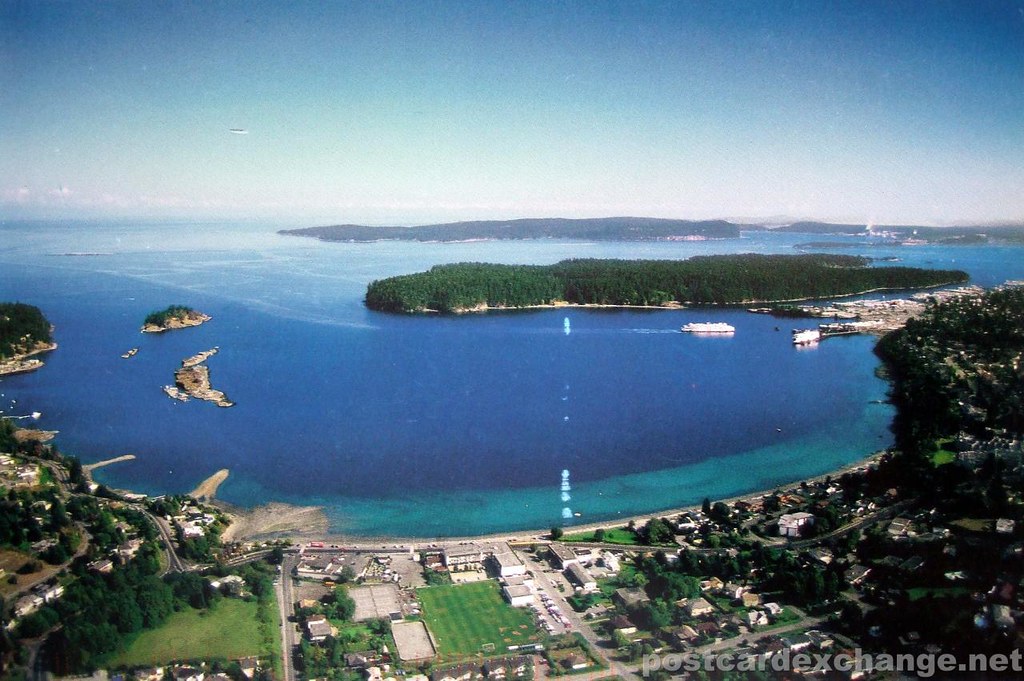Dave Flawse
In January 1913, Chief Constable David Stephenson heaves on a pair of wooden oars. He rows towards Kahklutter, the luck stone—a partly submerged chunk of yellow rock.
Almost 400,000 km above Stephenson hides a whisper of new moon nestled beside the sun. The two celestial bodies align to produce the bimonthly spring tide, and it’s during these extra-low tides, that one can see the stone. Legend says that who ever sees it receives one year of good luck.
He needs some good luck. Pirates have been marauding the north end of the Island and thus far have eluded capture. With almost 8,000 square miles are under his responsibility, catching these pirates is an almost impossible task.
The rowboat’s stern cuts the seawater, as the low-tide brine, a mixture decaying Dungeness crabs, tide-stranded fish, and seaweed, blows through across Departure Bay, BC. In a cold start to the year, snow has fallen almost all month and the mercury has seldom risen above freezing.
In the distance, the current’s white water breaks off the stone’s top. Stephenson’s thick moustache droops over his upper lip on an otherwise clean-shaven face. His thin eyebrows furrow and narrow-set eyes squint against the water’s glare.
Over the last couple of years, a pattern has emerged. The thieves first strike a Gulf Island, then a logging community, then finally a community on Vancouver Island like Union Bay. Stephenson is convinced they will hit there again soon.
The well-liked Constable James McKenzie, or Big Mac as the Union Bay locals call him, hasn’t been able to apprehend whoever has hit the town twice already. Gossipers say Big Mac is in on the robberies, but these reports remain unproven.
He pulls the oars and abreast of the luck stone. Legend says it swims away from anyone who tries to look at it, and it does appear to be traveling away from him—but that’s just an illusion of the current going around the rock while his boat is being pushed away from it.
Before immigrating to Canada, Stephenson had been an officer in the London Police in the U.K. where he became a member of the honour guard for Queen Victoria, and later, King Edward. After immigrating to Canada, he acted as the Governor Generals’ guard whenever one toured the Island.
If anyone on Vancouver Island has the skills to catch these criminals, it’s him.

Stephenson rests the oars on the gunwale. When the census man came around two years earlier, Stephenson wrote down “at sea” under his place of birth. He’s as comfortable as any sailor on the water and began the job in 1881 as the lone BC Provincial Police Officer stationed north of Esquimalt. He traveled the coast by canoe and would paddle arrested criminals to court in Nanaimo.
Few Islanders know more of their Pacific home than Stephenson. His work has brought him to once bustling Indigenous communities (now at the lowest population numbers in centuries in 1913.) He toured the China Creek mine near Alberni where Chinese workers mined the creek-bed gravel fine placer gold.
He was the arresting officer in high-profile cases across the Island. In 1906 he arrested Robert Styles Featherstone, a former corporal in the Northwest Mounted Police who shot and killed Mary Jane Dalton in her South Wellington home.
After a brief investigation, Stephenson found Featherstone fully clothed and asleep in his bed. He escorted the prisoner through a mob and had a hard time keeping them from assaulting the prisoner.
Locals seemed to have liked Stephenson. They thought him fair, and nobody ever complained about him. With so few officers however, the Provincial Police perhaps knew better than to ruffle the feathers of the public.
Back in the rowboat, now that he’s seen the stone, Stephenson lets the craft drift far into the bay while he ponders where to place the two undercover men.
Last year, Stephenson called in for help and enlisted two police officers specifically to snare these pirates. Gordon Ross and Harry Westaway. Westaway is a Canadian from PEI, and Ross a Scot and veteran of the South African war. Stephenson has trained and briefed them.
His son, Albert, will want to hear of a plan. He fell into law enforcement like his father at a young age and is now a constable in the mining town of Cumberland near Union Bay.
They’ve both seen the wanted poster from Washington state for a murderer and thief, The Flying Dutchman, aka Henry Wagner.This man is reported to be a member of the Butch Cassidy Gang.
If the pirating on the Canadian coast is Wagner’s work, catching him will be dangerous indeed.
He travels with an accomplice, William Julian, and they are reported to be in possession of a fast and silent motorboat, the Spray, stolen from a Washington port. Wagner is known to paint and outfit a new cabin to mask her appearance. The 16-foot motorboat could be unrecognizable from one robbery to the next.
Stephenson will do whatever it takes to uphold the law. During his investigations into the on-going mining strikes, he’s had to arrest miners he’s known for many years.
Eight months from now he will call in 1000 militia to protect strike breakers and Chinese workers. He will already have caught the Flying Dutchman, at the cost of an officer’s life.
While the Flying Dutchman is being hanged for murder downtown Nanaimo, Stephenson will likely be thinking of the escalating strikes—the shootings and stabbings. Perhaps this will be a stressful time for him because he will retire in 1916 at the relatively young age of 57.
For now, Stephenson takes in the view of his Island home, knowing only that the tide will flow and ebb once more and that the moon will cycle overhead.
